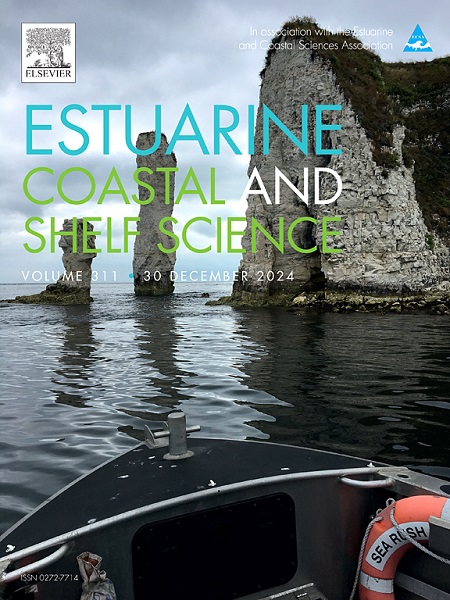Identification of sulfur species in coastal marine sediments collected from the Seto Inland Sea, Japan in summer
IF 2.6
3区 地球科学
Q1 MARINE & FRESHWATER BIOLOGY
引用次数: 0
Abstract
This study investigated the spatial distribution of hydrogen sulfide in sediment pore water and sulfur species in marine sediments of the Seto Inland Sea, the largest enclosed sea in Japan, using a combination of hydrogen sulfide detection tubes and X-ray absorption fine structure spectroscopy to identify sulfur species. The percentage composition of sulfur species in the surface sediments (0–5 cm layer) of the Seto Inland Sea was identified as sulfate (23.1–85.5%), thiosulfate (<5–30.7%), elemental sulfur (<5–31.0%), and pyrite (<5–44.3%). Organic sulfur was identified at some sampling stations. The redox potential of the sediments was positively correlated with the percentage composition of the sum of sulfate and thiosulfate to total sulfur, and was negatively correlated with the percentage composition of the sum of elemental sulfur and pyrite to total sulfur. The percentage composition of sulfate was negatively correlated well with total organic carbon concentration in the sediments. The slope of the linear regression between the percent composition of sulfate and total organic carbon concentration in sediments for the high-load area was approximately two times higher than that of the low- and moderate-load areas. X-ray absorption near the edge structure of iron in the sediments showed that pyrite was oxidized to sulfate coupled with the reduction of iron. In conclusion, the redox potential and total organic carbon concentration in sediments could be simple parameters for estimating sulfur species in sediments from the Seto Inland Sea.

求助全文
约1分钟内获得全文
求助全文
来源期刊
CiteScore
5.60
自引率
7.10%
发文量
374
审稿时长
9 months
期刊介绍:
Estuarine, Coastal and Shelf Science is an international multidisciplinary journal devoted to the analysis of saline water phenomena ranging from the outer edge of the continental shelf to the upper limits of the tidal zone. The journal provides a unique forum, unifying the multidisciplinary approaches to the study of the oceanography of estuaries, coastal zones, and continental shelf seas. It features original research papers, review papers and short communications treating such disciplines as zoology, botany, geology, sedimentology, physical oceanography.

 求助内容:
求助内容: 应助结果提醒方式:
应助结果提醒方式:


